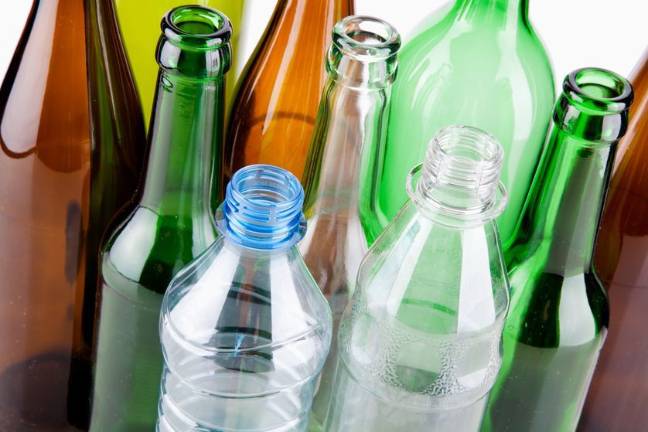Is it better to separate, or not, when recycling?

By Emily Andresen
Is one of your New Year’s resolutions to be more disciplined about recycling? Do you know which is better — single or dual stream?
Recycling methods differ from town to town. Dual-stream recycling, where residents separate their recyclables into two separate containers — one for cans, glass, plastic, and aluminum, and another for paper is still practiced by some towns: Andover and West Milford, New Jersey, for example. But dual-stream recycling, also known as source-separated collection, is now considered outdated. Most towns, like Sparta, N.J., and Warwick, N.Y., have transitioned in the past 10 years to single-stream collection, which allows all recyclables to be placed in one container.
Out of the 24 municipalities in Sussex County, N.J., fewer than five still collect dual-stream recyclables. Single-stream recycling is easier, so participation rates have skyrocketed. Fewer trucks (producing less emissions) are needed to transport the recyclables, and the sorting is done by machines and workers at a central facility. But this convenience comes at a cost.
Producing better materialsMichael Edelstein of Goshen, N.Y., president of the nonprofit organization Orange Environment and director of the Institute for Environmental Studies at Ramapo University of New Jersey, said the recycling is most effective when products are source-separated, since there is less likelihood of contamination when waste that isn’t recyclable is thrown into the bin. Responsibility also lies with haulers to make sure these materials stay separated, he said.
Edelstein said the best method is the one that repurposes materials to the highest grade possible. Once recyclables are contaminated, they either become lesser-grade materials, or cannot be recycled at all. That means more trash ends up in landfills, and the town loses revenue when fewer items can be repurposed. Right now, dual-stream produces the highest grade materials, he said, and theoretically sends them to their new, repurposed life much faster.
Reenee Casapulla, Sussex County’s Recycling Coordinator, said all recycling — whether single or dual stream— is good for the environment. Neither method causes more harm than not recycling at all, she said.
Recycling diverts usable materials into new products and new sources of energy, she said, sparing limited natural resources from becoming depleted, she said.
“Recycling supports the economy, local to global — with jobs, equipment, environmental engineering, industrialization and construction, regulation, enforcement, research, academia,” said Casapulla. “The list can go on.”
Becoming better consumersEdelstein encourages a whole new perspective on recycling. “Waste” is the wrong way to look at the recyclables we produce, he said.
He said it’s important to remember that the things we throw out can be relocated but will never go away entirely. That’s why he urges consumers to focus on the “reduce” and “reuse” parts of the “three R’s.”
“The idea of a ‘throw-away’ society needs to be thrown away,” he said.
Casapulla urges us to stop and think whenever confronting an item we want to get rid of: how can it be diverted from our trash entirely?
“Just because our garbage is no longer in our hands does not mean that it has gone away,” she said.
The trash we produce contaminates our waterways and oceans, affecting both wildlife and food resources, she said.
Today, recycling is easier than ever. In New Jersey, all public institutions — from stores, to restaurants, to offices — are required by law to provide a recycling bin. New Jersey has also contracted with a company called Recycle Coach, which developed a web-based recycling education app available on all smartphones. After you enter your location, Recycle Coach provides a schedule for your town’s recycling collection, a “What goes where?” search tool, and tips on becoming a better recycler.
Nationwide, only about 10 percent of people say they never recycle. The remaining 90 percent say they either always recycle or try their best to do so.
Edelstein said consumers and retailers each have their responsibilities when it comes to reducing waste. Retailers need to create longer-lasting products. Consumers should fix faulty products rather than immediately discarding them and buying new ones.
He said people need to learn how to consume more efficiently. Rein in that craze to buy, buy, buy, he said.
“The time to be lazy is gone,” he said.